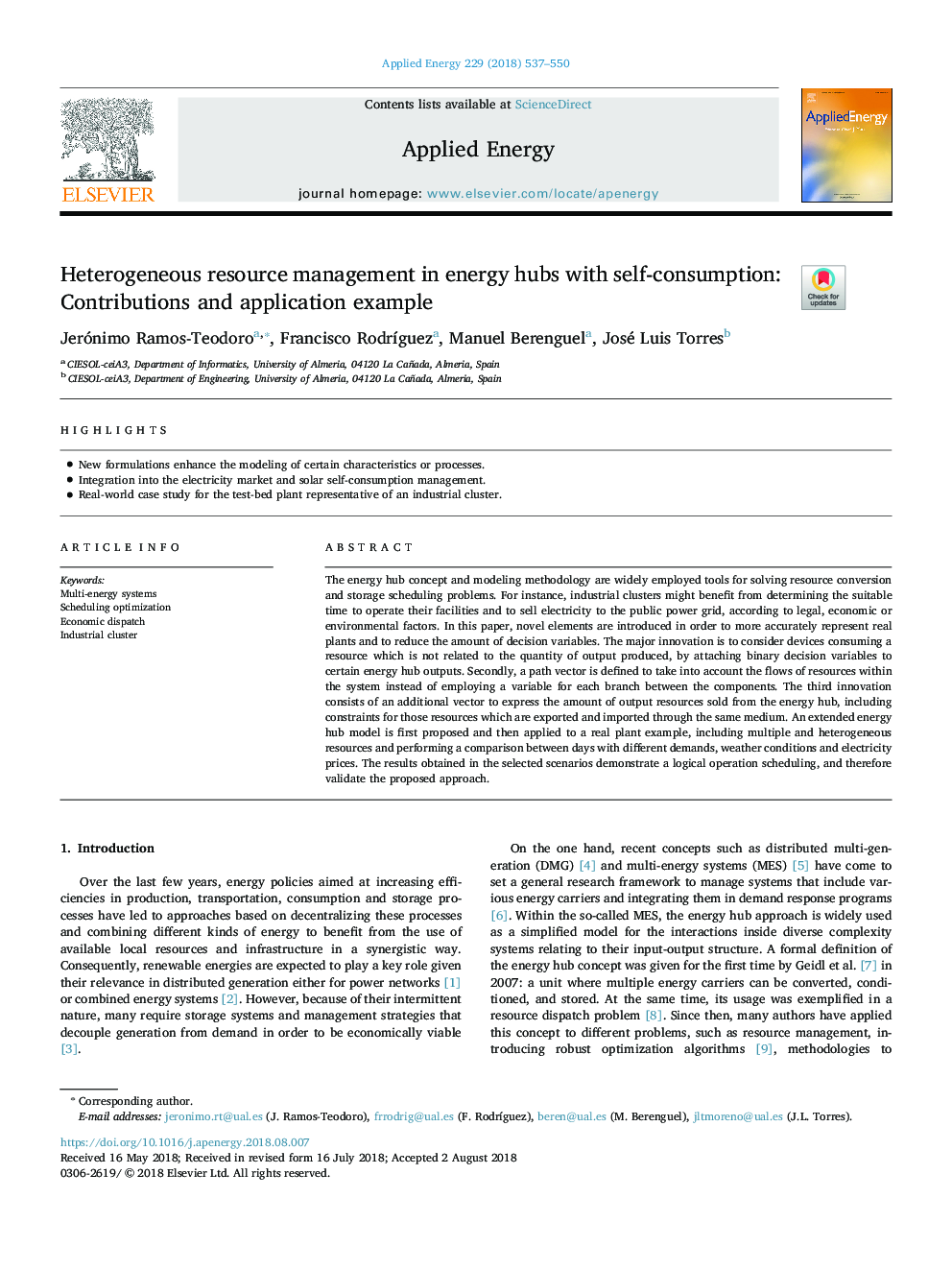| Article ID | Journal | Published Year | Pages | File Type |
|---|---|---|---|---|
| 6679686 | Applied Energy | 2018 | 14 Pages |
Abstract
The energy hub concept and modeling methodology are widely employed tools for solving resource conversion and storage scheduling problems. For instance, industrial clusters might benefit from determining the suitable time to operate their facilities and to sell electricity to the public power grid, according to legal, economic or environmental factors. In this paper, novel elements are introduced in order to more accurately represent real plants and to reduce the amount of decision variables. The major innovation is to consider devices consuming a resource which is not related to the quantity of output produced, by attaching binary decision variables to certain energy hub outputs. Secondly, a path vector is defined to take into account the flows of resources within the system instead of employing a variable for each branch between the components. The third innovation consists of an additional vector to express the amount of output resources sold from the energy hub, including constraints for those resources which are exported and imported through the same medium. An extended energy hub model is first proposed and then applied to a real plant example, including multiple and heterogeneous resources and performing a comparison between days with different demands, weather conditions and electricity prices. The results obtained in the selected scenarios demonstrate a logical operation scheduling, and therefore validate the proposed approach.
Related Topics
Physical Sciences and Engineering
Energy
Energy Engineering and Power Technology
Authors
Jerónimo Ramos-Teodoro, Francisco RodrÃguez, Manuel Berenguel, José Luis Torres,
